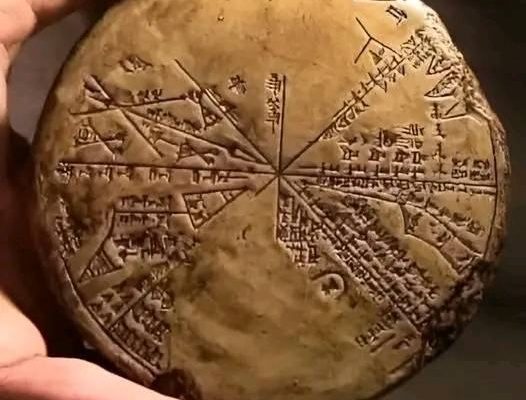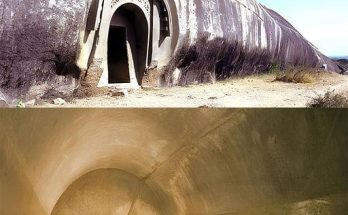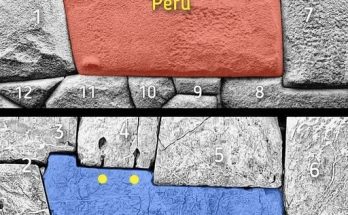
For over 150 years, scientists have been puzzled by a cuneiform clay tablet discovered in the underground library of King Ashurbanipal in Nineveh, Iraq. This circular stone-cast tablet, dating back to 650 BC, has recently been identified as a sophisticated Sumerian astronomical instrument called an “Astrolabe.”
In 2008, researchers Alan Bond and Mark Hempsell made a groundbreaking discovery. Using modern computer programs, they were able to decipher the tablet’s contents, revealing it to be a night sky observation from June 29, 3123 BC. Half of the tablet recorded typical astronomical data, while the other half described an unusual object in the sky.
The researchers concluded that the tablet recorded the observation of a mᴀssive asteroid, over a kilometer in diameter, on a collision course with Earth. The asteroid’s trajectory matched perfectly with a mysterious impact site in Köfels, Austria.
The low entry angle of the asteroid caused it to explode before impact, creating a fireball about five kilometers in diameter. This explains the absence of a traditional impact crater at Köfels, instead leaving behind a mᴀssive landslide.
The explosion’s back plume would have extended over the Mediterranean Sea, potentially causing widespread devastation in the Levant, Sinai, and Northern Egypt. This ancient disaster likely resulted in more casualties from the heat of the plume than from the initial impact in the Alps.
This remarkable discovery not only sheds light on a catastrophic event from our planet’s past but also provides extraordinary evidence of the sophistication of Sumerian astronomical knowledge. The ability to accurately record such an event over 5,000 years ago is a testament to the advanced scientific capabilities of this ancient civilization.
A hidden gem nestled in the heart of Italy, Sermoneta stands as a magnificent testament to medieval architecture and timeless beauty. Located just 55 kilometers from Rome,…
In the mist-shrouded mountains of northern Peru lies a tale of an extraordinary civilization that continues to perplex historians and archaeologists alike. The Chachapoya, known as the…
Within the sacred grounds of Dendera, Egypt, an extraordinary architectural enigma has captured the imagination of scientists and historians alike. The Temple of Hathor, an ancient marvel…
Deep within India’s Madhya Pradesh region, archaeologists have uncovered a series of remarkable cave paintings that have captured the attention of researchers worldwide. These 10,000-year-old artworks, discovered…
Perched high in the Andes Mountains, Machu Picchu stands as a testament to the extraordinary ingenuity of the Incan civilization. Among its many architectural wonders, the ancient…
A Remarkable Discovery In 1921, archaeologists in Denmark unearthed an extraordinary find in a peat bog – the remains of a teenage girl dating back 3,400…



